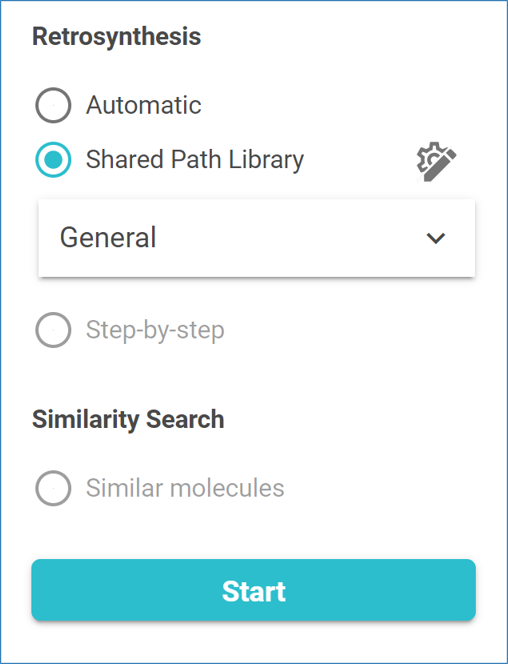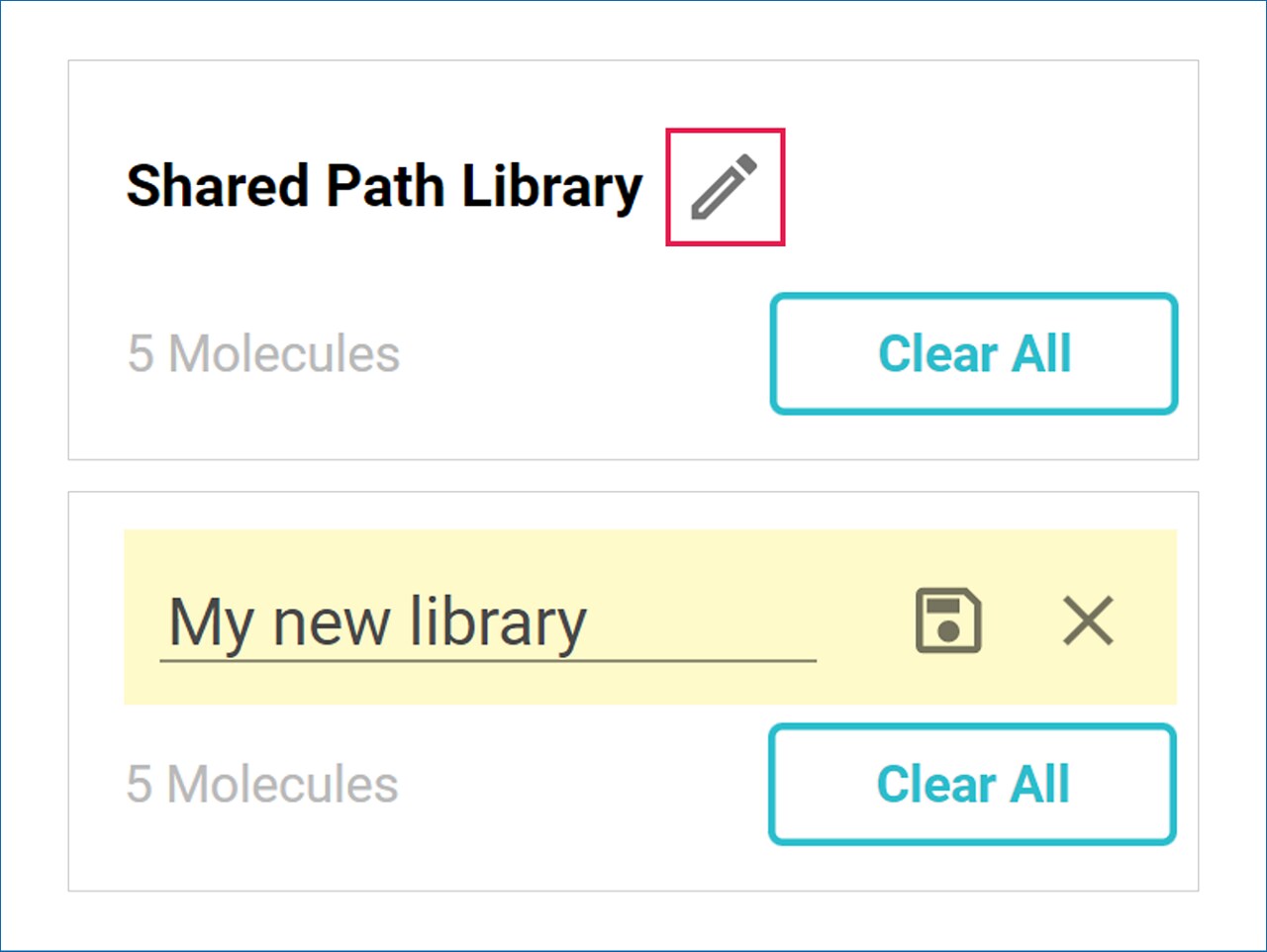Select Analysis Type
The list of analysis types is located to the right of the molecule editor. To select a Shared Path Library analysis, choose ‘Shared Path Library’ from the Retrosynthesis menu.
Note: ‘Shared Path Library ’is selected by default when the multiple-target toggle is enabled.

By default, your new analysis is named ‘Shared Path Library’. You can change the name by clicking on the ‘Edit’ icon next to the library name.

Saved Configurations
Shared Path Library analyses are conducted as concurrent Automatic Retrosynthesis analyses. As for any Automatic Retrosynthesis analysis, you can select a Saved Configuration that aligns with your molecules and specific needs. Saved Configurations are sets of saved analysis settings optimized for distinct purposes.
- Click on the ‘Saved Configurations’ drop-down menu,
- Select the desired configuration from the list based on the results you wish to obtain.

General
Returns balanced pathways that prioritize less expensive starting materials.
Use for: Finding diverse and efficient pathways for most small and mid-sized molecules; this is a good starting point.
Diverse Pathways
Returns diverse pathways with no repeating disconnection schemes.
Use for: Idea generation.
Complex Molecules
Tailored for complex molecules greater than 500 MW and with more than 2 stereocenters. This longer analysis incorporates additional algorithms that enable SYNTHIA to strategize over multiple steps. It also permits the use of more expensive starting materials and relaxes selectivity and protection requirements.
Use for: Natural products, large molecules, molecules with multiple chiral centers, and other complex molecules.
Common Chemistry
Promotes pathways that utilize commonly used and reliable chemistry, allowing for more expensive starting materials.
Use for: Finding short syntheses with tried-and-true chemistry.
Quick Analysis
A short analysis designed to return diverse pathways.
Use for: Quickly assessing chemistry for small and mid-sized molecules.
Note: This configuration may not return any results when used with complex molecules.
Exclude Published Reactions
Similar to General but utilizes only predictive rules to design pathways.
Use for: dea generation and discovering unique reactions.
Promote Published Reactions
Finds pathways using published reactions, including enzymatic reactions, and promotes robust chemistry.
Use for: Finding reliable chemistry.
Low-cost Starting Materials
Finds pathways that begin with inexpensive starting materials while promoting diversity in the results.
Use for: Finding cost-conscious pathways.
Note: SYNTHIA™ does not consider the price of reagents and solvents
Build Heterocycles
Finds pathways that construct heterocycles from scratch, even when heterocyclic building blocks are published or commercially available.
Use for: Checking how to build heterocycles.
Note: This configuration works best for unsaturated rings or fused rings that contain at least one nitrogen, oxygen, or sulfur atom.
Show Protecting Groups
Finds pathways that include explicit protection and deprotection steps or and find protected starting materials to the pathways.
Use for: Finding pathways explicitly including protection and deprotection steps in the synthesis.
Synple Chem Discovery
Finds pathways that can be automated using Synple Chem Automated Synthesizer by using reactions that are compatible with the Synple Chem capsule chemistry. For more information on using SYNTHIA and Synple Chem see our Application Note.
>> Application Note (Part 1)
>> Application Note (Part 2)
Use: In conjunction with the Synple Chem automated synthesizer.
Click ‘Start Analysis’ to begin
Note: See “Customize Analysis Settings” to learn how to customize, save, and favor your own analysis configurations.
.png)

